Once again about fireplaces. This time we consider the various aspects of the "fireplace" question in the urban apartment.
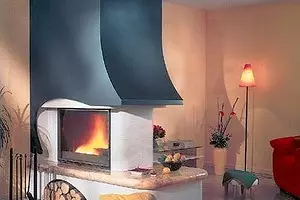
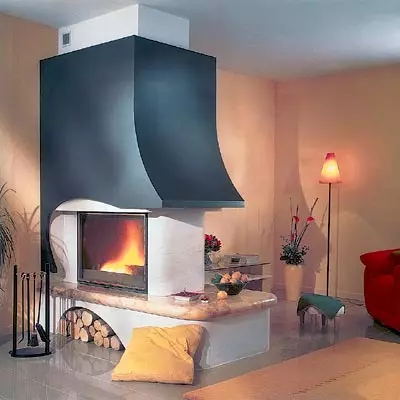
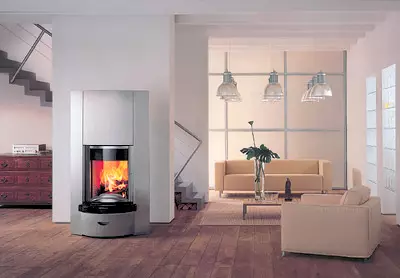
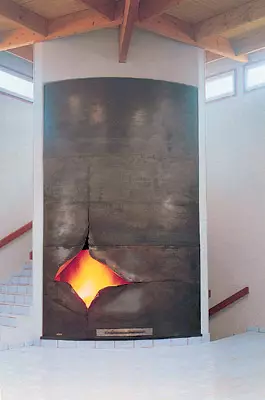
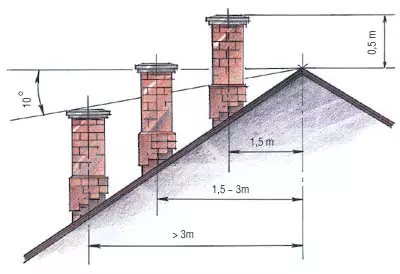
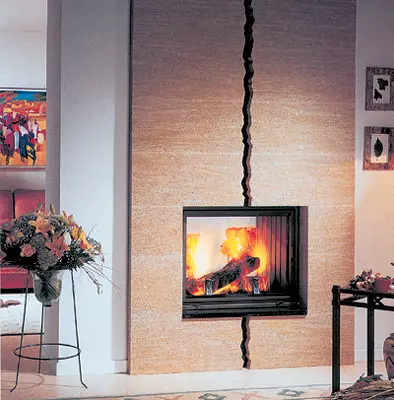
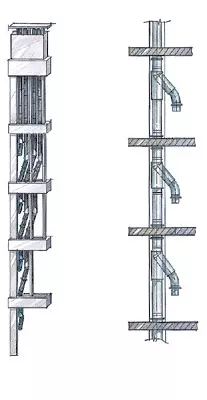
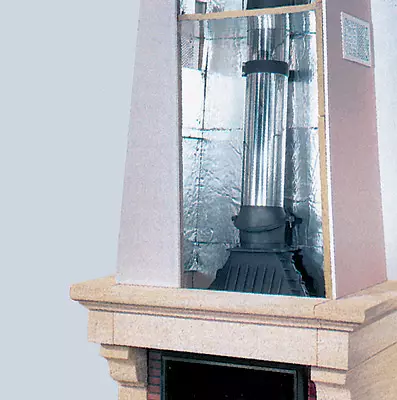
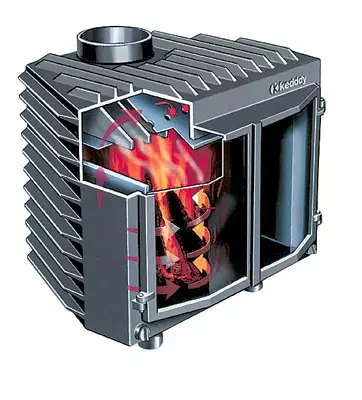
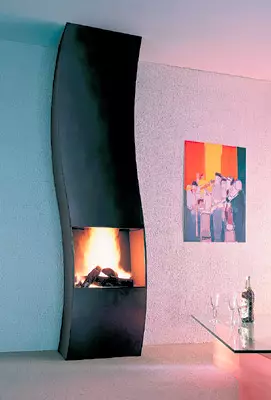
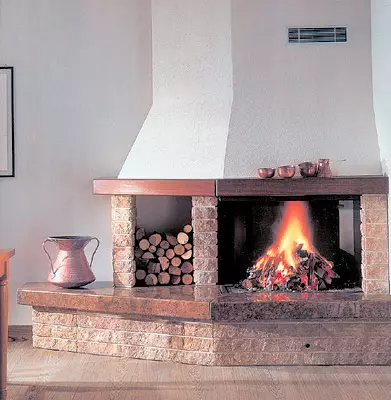
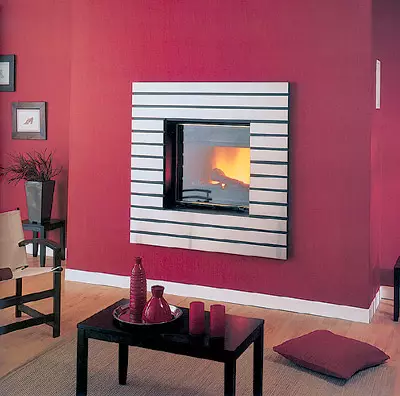
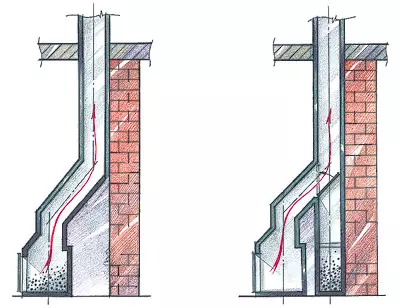
"We make" clothes "for fire," the head of the Dutch firm engaged in the production of fireplaces, Harry Polyov proclaimed. Amas, apartment owners, choose this "clothes", confirming with their own tastes and technical requirements, which makes us every particular room.
In the magazine "Ideas of your home", materials about the fireplaces were published repeatedly (
"Autonomous heating systems",
"The source of heat and peace" and
"Fire, firewood and smoke pipes ..."). Innisses lit different sides of the problem of creating "clothes" for fire in a country house. Moreover, it was preferable to construct fireplaces from bricks. The purpose of this article is to discuss the main aspects of the "fireplace" question in the urban apartment.
Legal aspects
To date, there is no national regulatory document in Russia, which would outline the range of requirements for the constructions of fireplaces in urban apartments and country houses. And there is no permitting nor prohibitive documentation. Invisions of SNIPA "Heating, Ventilation and Air Conditioning" contain recommendations on the construction of furnaces (SNiP 2.04.05-91 "Furnace Heating"). The builders of fireplaces usually use as a guide to the action of the paragraphs of this document dedicated to the design of chimneys (3.73, 3.76), the organization of thermal insulation around the chimney (3.83) and ensuring fire safety (3.84, 3.86). Although legally, this document applies only to the furnaces and does not contain references to fireplaces.These mention are found in some territorial legislative documents. For example, certain restrictions make Moscow city building standards adopted in 1996 (MFS "residential buildings" 3.01-96). According to this law, the installation of the fireplace is allowed in apartments on the last floor of a residential building or on the penultimate floor, provided that the apartment is two-story and has one owner. The rule does not apply to the buildings, in the project of which the chimney channel already laid (we are talking about modern home planning houses, as well as about old, pre-revolutionary and "Stalinist" buildings, - they were heated by bourgear stoves and gas boilers, so the chimney channel was one of The necessary attributes of the construction of the building). Plush houses, provided that the chimney is in working condition, to build a fireplace can a resident of any floor.
The first documents dedicated to the fireplace were the territorial norms of the fire safety of St. Petersburg and the Leningrad region "Fireplaces. General technical requirements. Test methods. TNPB 6-01-99. " Here are stipulated by the materials used in the construction of the fireplace, the premutoral platform and the thermal insulation of the chimney, the design parameters and the room in which it is assumed to be located, as well as methods of testing of fireplaces.
The absence of a single legislative base gives rise to confusion and confusion that invariably accompany the construction of fireplaces in urban apartments. To date, the creation of such a structure is equal to redevelopment of the apartment and, therefore, involves obtaining a similar package of permits (in Moscow, a document, on the basis of which all permits are issued, is the law "On the procedure for reorganizing premises in residential buildings in Moscow" from 29 September 1999).
What is this package of documents? First of all, the permission is required by the district or district. To get this permission you need:
one. Provide a redevelopment plan. Its most often create joint efforts of two organizations: firms engaged in the installation of fireplaces, and a project organization that has a license to compile a redevelopment plan.
2. Fine cases may require a technical conclusion on the state of the house designs (TZK). The TZK contains information on engineering surveys of carrier and enclosing house structures, as well as conclusions about the technical possibility of redevelopment.
3. Get instructions and additions to a company that has a license to develop recommendations on fire safety (for example, VNIIPO MOE, Balashikha).
four. Finally, to obtain permission from the management of the State Fire Service (UGPS) of the district or district.
Coordination with firefighters, as practice shows, the most responsible step of obtaining permission. Next, you will need to coordinate the developed project in specialized organizations (we give a list of instances for Moscow, in other cities the list can be a little different):
SanEpidemadzor district of the district (SES);
district architectural and planning department (RAPAP);
At the Balancer or the owner of the house (DEZ or HOA);
in the moszhilnia project of the State Housing Inspectorate of the Prefecture of the Administrative District;
gas technical inspection (if there is gas in the house);
MosorhorExpertise;
Mosenergo and Energonadzor;
Heating networks and moscorpelle (if the batteries are transferred);
Housing inspection of the district.
Then it will be necessary to receive a written statement of the owners of the neighboring, above- and the following premises, that they do not object to redevelopment, and assure their signatures in Hsek. The last stage of the procedure is the MVK meeting and the approval of the protocol for the relevant number.
In each of the matching organizations, you have to officially pay departmental fees (in aggregate- $ 800 and higher). And these are only official expenses. In practice, coordination by the resident of Moscow costs $ 2000-3500 (resident of the Moscow region is 30-40% cheaper). If you are going not only to build a fireplace, but in the near future to carry out other redevelopments in the apartment, we advise you to unite these events. Then it will not be necessary to receive permissive documentation twice. Many future owners of fireplaces are limited to getting one permission from firefighters, hoping that the remaining organizations simply will not arrange checks on their territory. Such a situation is fraught with further problems, for example, with JCC, and besides illegal. According to the Housing Code, an apartment or tenant, who undertook a unauthorized reorganization of the residential premises, is obliged to bring it to the previous state at his own expense (Housing Code, Art. 84, Part 3).
To get the entire package of permits, almost no customer is not taken on its independently, it takes a lot of time - six months, and sometimes more, and the result is not always positive. There are many architectural and construction companies specializing in obtaining permits in the MVK. We recommend that you entrust this decision of this very difficult problem to specialists. You pay a company about 10% of the total project amount and save the mass of time (specialists solve this problem for 2-3 months), and the positive result will be more likely.
If you buy an apartment at the construction stage of the house, you have the opportunity to solve the problem of "registration" of the fireplace to another method of making the necessary information about it in a compartment plan before the completion of construction work. This question is negotiated with the designers of the building, which take over all concerns in coordinating changes in the design of the house with firefighters and make appropriate adjustments to the plan. After that, the confinement fireplace will not be considered as redevelopment.
In the houses of the pre-revolutionary building, it will be necessary to conduct an examination of the state of the chimney (that is, check it on density, fire safety). Examination and cleaning are carried out, among other things, government organizations, such as remarrvis, where the cost of the entire procedure is about 1000 rubles. If in the further construction of the fireplace, you do not violate the integrity of the building designs, no other permissive documentation is required. True, in old houses, wooden or mixed overlaps are usually installed, and firefighters issue permission to install the fireplace "with creak". In this case, you will most likely need an examination of a specialized firm (for example, the same VNIIPO EMERCOM from Balashikha).
Preliminary care
Of course, you are full of unique design ideas and hurry to realize them in practice. Do not hurry. When drawing up a room plan with a fireplace first, there will have to take into account several technical requirements. First of all, it is impossible to be placed on the path of possible drafts, otherwise you will experience constant problems with providing normal traction. The strongest drafts, as you know, arise on a straight line between window and doorways. There are more winding air movement paths. Their trajectory depends not only on the location of windows and doors, but also from the ventilation system. It is better to determine the optimal place under the direction of the specialist, the majority of firms engaged in the installation of fireplaces give such consultations.
Consider the availability of smoke channels in the house of the smoke channel (so usually the smoke mines are called, although in the practice of fundamental differences between the concepts of "chimney", "smoke canal" and "chimney" no one does). The distance between the smoke canal and the fireplace should be minimal. In the "wall" fireplaces, the center of the chimney in the wall of the adjoint can deviate from the vertical axis of 150 mm, at the angular one, is located on any of the walls at a distance of no more than 300mm from the angle. The ideal option is the location of this center at an altitude of 1.9-2m from the level of clean floor.
Smoke channels are usually located either inside the walls of non-combustible materials (the so-called wall channels), or separately, on an independent foundation (indigenous). In the absence of insertion and second above the fireplace, ardent channels are arranged, based on the combustion part of the structure, or suspended, string with stretch marks to the ceiling overlap and walls.
Be sure to follow the wall to which the fireplace adjoins, was made of non-combustible materials. There should not undergo any communications - electrical wiring, gas and water pipes. Before the door of the furnace should provide a free space of at least 1.5m, which can not be filled with furniture.
SNiP 2.04.05-91 "Heating, ventilation, air conditioning"
Stove heating
3.73. The height of chimneys, counting from the grate grid to the mouth, should be taken at least 5m. The height of chimneys placed at a distance equal to or greater height of a solid construction protruding over the roof should be taken:
not less than 500mm- above the flat roof;
not less than 500mmm over the ridge of the roof or parapet at the location of the pipe at a distance of up to 1.5m to the skate or parapet;
not lower than the roofing rod or parapel - when the smoke pipe is located at a distance of 1.5 to 3m from the skate or parapet;
Not lower than line 10 to the horizon, when the smoke pipe is located from the skate at a distance of more than 3m.
Chimneys should be erected above the roof of higher buildings attached to the building with furnace heating.
The height of exhaust ventilation channels located near the smoke trumpets should be taken equal to the height of these pipes.
3.76. The flue pipes on buildings with roofing of combustible materials should be provided with intrinsiclates made of metal mesh with holes of no more than 55mm.
3.83. The distance from the outer surfaces of brick or concrete flue pipes to rafters, crates and other parts of the roof of combustible and labor-burning materials should be provided in the light of at least 130 mm, from ceramic pipes without insulation - 250mm, and with thermal insulation with heat transfer resistance 0.3 m2c / W with non-flammable or hard-sized materials 130mm.
The space between the smoke trumpet and the structures of the roof from non-combustible and labor-burning materials should be blocked by non-combustible roofing materials.
The fireplace equipment is selected taking into account the loads on the floor and bearing walls. If the load exceeds the carrying ability of the overlaps (the set of overlaps from the plates in typical apartments, on average, withstand 400-600kg / m2 load, monolithic 1000kg / m2 or more), then they must be reinforced. Strengthening is usually carried out with a metal rolling or reinforced concrete. Most fireplaces installed in apartments are stacked by 300 to 800kg. Watht the gaps do not fall from brick structures, they are too heavy (weigh up to several tons). Therefore, brick structures in urban apartments are extremely rare.
Ensuring fire safety
The fire safety issue is addressed by several problems at once. First, the design and thermal insulation of the chimney itself. It should be vertical, without lesions. If necessary, it is allowed to deviate flue channels by an angle of no more than 45 from the vertical. Around the chimney pipes, thermal insulation shaft is created - from mineral wool, foam concrete blocks or bricks. The distance from the outer surface of the pipes to rafters, crates and other parts of the ceiling and roofing is determined in accordance with the standards of SNIP 2.04.05-91 (3.83): it is 130 mm for brick and concrete pipes, for ceramic without thermal insulation - 250mm, with thermal insulation, 130mm . For pipes from the "stainless steel" type "Sandwich" (in the construction norms, they are not mentioned) This distance is 150-160mm from the inner wall of the pipe (if you follow European standards).Secondly, the thermal insulation of the roof and overlaps, made using combustible materials. To ensure it is most often used mineral wool, metal plates, as well as all sorts of fire-bearing masses and means of processing for wood, metal and other materials (they produce many Russian firms: "Scientific Innovation Center for Construction and Fire Safety" (NICS and PB), " Rogneda "," Soyuzpenziozolation "," Promo-Invest ", etc.).
The following concern is to ensure the fire safety of the implementation platform (if it is made of combustible materials). For this purpose, ceramic tiles, stone slabs or metal sheets are used. And, finally, if the wall to which the fireplace is leaning is, consists of combustible materials, it will be necessary to build an additional "simpleness" in the Pollipich (it should be wider than the furnace).
Territorial rules of fire safety of St. Petersburg and the Leningrad region fireplaces. General technical requirements.
Test methods. TNPB 6-01-99
2. The boint-heating device, the principle of operation of which is based on the radiation of heat from burning fuel and on the heated walls of the flue space into the heated room.
5.2. The design of the fireplace and chimney should provide a permanent air flow in the flue chamber during the furnace, while in the upper zone of the combustion opening, with an open fuel hole, the speed of the air flow must be at least 0.25m / s.
5.8. The temperature of the outer surface of the fireplace (except for metal parts, closing and framing the flue opening), should not exceed 363 K (90C), regardless of the air temperature in the room.
5.9. The distance from the flue hole to combustible materials and structures should be such that their surface temperature is no more than 50c.
5.11. The ratio of the area of the flue hole to the cross-sectional area of the smoke tube should be within 8-15. The cross-sectional area of the chimney should be at least 0.03m2.
5.21. For the construction of flue pipes (channels), it should be used: a dense red construction brick brand is not lower than M125, blocks made of heat-resistant concrete, pottery pipes and metal pipes with thermal insulation with thermal resistance of at least 0.5 m2c / W. Pipes must be made of stainless acid-resistant steel.
5.22. Each fireplace must have a separate smoke canal.
Ventilation
One of the main problems that are faced with the construction of the fireplace is to ventilating the room. For the normal functioning of the fireplace, it is necessary to provide an organization of an additional air intake to the room at the rate that the closed-type firebox consumes about 200-300m3 / h (for open foci, this value can reach 800-1000m3 / h).
The layout of typical houses in Russia is designed for the influx of fresh air through the lootability of building structures. The use of modern double-glazed windows "seals" the room and, thus, almost completely eliminates this method of venting. Of course, you can take advantage of the most ordinary manner, there is nothing easier and more convenient! But in winter, many owners refuse it, fearing drafts. So the builders have to be sophisticated and invent other methods of oxygen intake, for example, to install special ventilation systems. The most primitive of them simply serve air from the street, more complicated, still cleaned and heated it.
There are more exotic options. Thus, under the window frame, you can punch a small through hole - through it the air will enter the room from the street (of course, the hole is provided by the adjusting flap). This case is desirable to install the heating convector under the window, thanks to which the cold flow will be heated when entering the room. Another option is a device of the ventilation channel in the wall overlooking the staircase. On the staircase is always enough fresh air entering through the entrance doors, windows on intermediate sites. Moreover, it is already partially heated and will not freeze the capricious owners.
Constructions and manufacturers
Any fireplace consists of three main elements: fireboxes, chimneys and decorative cladding. Most manufacturers presented in the Russian market offer sets of firebox and cladding. Moreover, several decor variants are usually provided to the same furnace. Conversely, one cladding is compatible with several focus models. There are several dozen manufacturers in our market: Arkiane, Chemines Philippe, Deville, Godin, Rene Brisach, Seguin, Supra (France), Arriaga, Ferlux, Fugar (Spain), Austroflamm (Austria), Caminetti Montegrappa, Edil Kamin, Piazzetta (Italy), DovRe (Norway), Stovax (United Kingdom), Hark, Max Blank (Germany), Keddy (Sweden), etc. Unique in kind of Finnish Fireplaces of Tulikivi, made from talco chlorite stone that can accumulate heat. Hoping, these models are distinguished by very large weight and therefore rarely installed in apartments. Exclusive in terms of design of the Boley product (Holland) and Focus (France). The production of the chimney "Fireplace" firms are usually not engaged, there are manufacturers that exist.It is very difficult to navigate in such a variety of manufacturers, especially since many of them produce fireplaces of completely different styles. According to the price category, all products can be divided into 3 groups: "cheap" (the cost of the set of firebox and portal is not higher than $ 3-4 thousand: Seguin, Deville, Dovre, etc.), "Average" ($ 4-10 thousand: Edil Kamin, Cheminees Philippe, Stovax, Piazzetta, etc.) and "dear" (more than $ 10 thousand: Arkiane, Boley, etc.).
Fire. The firebox is called "heart" fireplace. Firewood burns here, giving out their warmth. The furnaces differ from each other by manufacturing materials and additional air distribution devices in the room. Can be closed and open, but depending on the location built into the wall, leaning or island.
Almost all "urban" fireplaces are equipped with a closed firebox. Its advantages are high efficiency (up to 80%), good fire safety (the firebox does not splash smoke, does not shoot coals), the ability to regulate the fuel combustion rate. During burning firewood, such a design does not require constant supervision. Even with improper installation of the closed firebox, carbon monoxide will fall into the room. And, as you know, it is harmful to people's health and at great concentrations can even lead to their death. There is not a closed firebox as open, terrible drafts.
Most of the closed floors are arranged so: the combustion of fuel occurs on a grate grid, the air for combustion enters through the adjustable cross section (in some models it is located at the bottom of the structure, in others, in the rear walls). The ash, waking up through the grille, is collected in the ash drawer. Usually the furnace is installed on metal legs, which are included or manufactured by the installation company. Listening to their absence is a pedestal of brick or foam concrete. The door is usually performed from refractory glass and can be flat (cheapest in production), semicircular (most expensive) or erker. Opens to side or to the side and up. Extractive models (for example, in a vertically elongated 650 HT / GV firm from Piazzetta, in the Univers model from the company Supra) upwards using the roller mechanism the door is fixed in the raised state and allows fire fans to exploit the furnace in the open form.
Some firms are developing more complex designs. This is, for example, the FOVEA FOWEA CHEMINEES PHILIPPE model range. Air is supplied to them at once from three sides, through the rear wall, the bottom pissed and the facade. The inner surface has a complex system of protrusions, which allows you to optimize the "smoke labyrinth" and receive a rather high efficiency of 75%. An interesting feature of the KEDDY-solicular furnace design (by the way, before the name of this company was written differently, Kedddy, and buyers accustomed to him still consider the "fake" fireboxs marked as Keddy). The lack of connecting seams makes the design more durable (so, the shelf life on the Keddy firebox is 10 years).
Separate models of the furnace are equipped with an additional function "Clean glass": at the top, between the door frame and glass, the gap is left. Through it, the firebox "flows" cold air, which serves as an obstacle for the admission of soot to pure glass (such a function has, for example, models F-168, F-148, Univers from SUPRA).
Open furnaces are just a refractory brick niche (for example, the Saturne model of Seguin or Saint-Jean CHEMINEES Philippe), ceramic blocks (Veneciani Piazzetta) or cast iron (MIX model from Edil Kamin; English stoves are traditionally opened). There is also fully open foci (fireplaces of such a design are the podium on which the fire is burning, and hanging over the flame of an umbrella-smoke collector, fixed only in the upper floors). Fully open fireplaces are in the assortment of Boley firms (Models 186, 998, 36 GR, etc.), Focus (MEZZOFOCUS model). The heating ability at the open furnace is not higher than that of the fire, - she warms until the firewood burns. According to the calculations of heat engineers, the efficiency of the traditional open firebox is 5-20%. The coefficient is low due to the fact that, firstly, the fireplace works with free air access, so the cross-section of the chimney pipe for gases should be quite large, as a result, a significant portion of warm air flies into the pipe along with smoke. Secondly, the refractory brick (and most of the open furnaces are made of bricks) - a rather heat engine material and gives heat significantly slower than metal surfaces.
To increase the efficiency of the open firebox from the brick, it is necessary to increase the reflectivity of its internal surfaces - say, to attach a cast-iron or metal plate to the rear wall. Such "heat transfer amplifiers" offers to their models, for example, the French company RENE BRISACH-RB 7, RB 35. The furnaces open from four sides are very firewood, so they are not recommended in small-sized apartments. If you are still "sick" by an open source and do not agree to any other options, be sure to raise the fireplace on the podium, made of non-combustible materials (it can even be a refractory glass).
Chimney - These are the "light" fireplace, which are responsible for creating the necessary thrust and flushing of flue gases from the furnace. Can be made from various materials: brick, heat-resistant concrete, ceramics, metal. For the chimney, such indicators as thrust, refractory and anti-corrosion properties of materials are important. The flow section and the height of the chimney are calculated based on the size and power of the furnace, as well as the roof designs. The generally accepted ratio of the chimney cross section and the size of the furnace of the furnace (width / height) is 1:10. UFIRM producers exist special calculated tables that set the ratio of the diameter and height of the chimney to the sizes of the furnace. The best form is round, somewhat worse than the most inappropriate is rectangular.
Metal chimneys such as "sandwich" are most popular today - two-pipe, with filling the intercoupled space of non-combustible basalt cotton. They are made of "stainless steel" thickness of 0.5-0.6 mm. The Russian market presents a fairly large number of firms offering similar products: Bofill, Nigara (Spain), Hild, Poujouly (France), Selkirk (United Kingdom), Raab (Germany), Vilpra (Lithuania), Fineline, "Elit", Research Institute (Russia). Chimneys are connected to the furnaces with special adapter pipes, also made from the "stainless steel". The entry of the pipe into the chimney and its compounds with the headguard furnaces are processed by special heat-resistant sealants and mastic. Prices for pipes of different manufacturers can vary quite hard: Russian producers are about $ 65-80 (for pipes with a diameter of 200mm), Vilpra and Bofill 1 run is about $ 80-90, and Poujouly is 2 times more expensive, $ 160. True, the design of the latter is more perfect: each part of the "deaf" pipe, that is, on both sides, is completely closed "stainless steel".
There are also so-called flexible chimneys manufactured from corrugated steel (most of them are two-layer, without heat insulation). They are used in the modernization of old brick chimneys ("Gilzing" - embedding into the existing chimney of the pipe of smaller diameter), as well as when laying the chimney in areas of complex configuration. Produces these pipes, such as Tubest (France), the cost of 1 pm with a diameter of 150mm- $ 48, with a diameter of 200mm- $ 65).
Ceramic chimneys in the Russian market are represented by the German company Tona. Have a three-layer design: internal layer-ceramics, medium-insulation, external concrete (foam concrete). The thickness of the ceramic pipe Tonadin-15mm, it is resistant to corrosion and easily cleales. Between the layer of insulation and concrete are provided by emptiness that ensure the ventilation of the system. The lack of ceramic structures, as well as traditional bricks, is a lot of weight.
In the fireplace, you can burn the most different tree: oak, beech, maple, birch, aspens. But not all of the lamps are burning the same way of their combustion depends on the density. Breeds with small pores (solid) are grieved slowly, long retain heat. Classic wood include Oak, Maple, Beech, Grab. Available and provide good heat dissipation of birch lamps. It is not recommended to trample a fireplace too soft firing - a poplar, yawa IT.P. Also for the fireplace of bad coniferous rocks, they contain a large amount of resin, smoothly and contribute to the rapid pollution of the chimney. In addition, the coniferous rocks splash the sparks of fire, which can cause the ignition of any objects near the furnace.
It should not be put into the fireplace raw wood, they are badly flared and contribute to the formation of a large amount of condensate (moisture) on the inner surface of the chimney. It is known that the freshly edged tree contains up to 50% moisture. The adhesive of the furnace are suitable for firewood in which moisture is 15-20% (this corresponds to wood, aged 2-3 years in a well-ventilated and protected from precipitation). In case of extracts, it is strictly forbidden to use chemicals or liquids of gasoline, kerosene, alcohol, oil. Lengins should not be small, optimal length - 2/3-3 / 4 of the width of the flue hole.
Fire in the fireplace can be "play." For example, painting the flame. Water from specialized books There are recommendations on this subject: "An ordinary cook salt gives an intense yellow color, chloride meditative range of paints, in which the blue and green shades are strongest. Additives can be filled directly into the center, but it is better to make a solution and soak them firewood". The council, of course, interesting, but for some reason nothing is written in the book about the harm of the vapor of copper chloride for a person. Therefore, be prudent and treat such information carefully, if possible, avoiding chemical impregnations and additives. It would be better for the "Natural" ways of playing with fire. To give a flame of a special drawing, you can use stumps and roots, and to obtain a fragrant fragrance of juniper, cherry and apple trees.
Where to buy firewood? This question is solved in many ways, since we have no problems with the wood. Some enjoy the waste located near the joiner's workshop (it should be only large firewood and in any kind of sawdust or chips), others by arrangements with forestry harvest the fuel of the future, the third are sent to the fireplaces store and acquire it there. A more urgent problem is the storage of firewood. And if it's pretty easily in the conditions of a country house (built a canopy and keep on health), then everything is much more difficult in the urban apartment. Think about the storage of firewood in advance. For example, highlight the place in one of the utility rooms (for example, in the pantry). It is desirable that the room is well ventilated. Do not put firewood, especially freshly ready, in the basement, they not only do not dry, but even moldy.
In the passport of each furnace, the allowable types of fuel are indicated. There are models designed for burning not only wood, but also coal, brown coal and peat. In practice, most fireplaces are drowned all the same wood.
Brick chimneys in urban apartments are not popular today. Their structure is a very time-consuming process. Also, the disadvantage of brick chimneys is a significant roughness of the surface of the walls: the soot is deposited on them, the pipe gradually "overcomes", the thrust falls noticeably. But the design of the chimney is not only the pipes. To protect against rain, snow and lateral wind on the ledge (the so-called part of the chimney, towering above the roof), a deflector is installed. On buildings with roofing from combustible materials, the sparkling agent made of metal mesh with holes of no more than 55mm is added. With a bad chimney, the chimney is supplied with a fan (chymosa), providing enhanced extract. Such fans are quite a lot on the Russian market, for example, the Vilpe model of the Finnish company SK Tuote Oy ($ 640), the ZRS 170 model ($ 360) and the ZRS 180 ($ 480) of the Swedish Systemair, the Tiracamino model ($ 450) of the Italian company Vortice. Features of the device smoke-centrifugal construction and the location of the motor over the turbine, that is, outside the zone of the removed gases. Consider if you equip your fan chimney, the latter should work with each fireplace firebox. In the opposite case, difficulties may arise. The smoke is fastened on the top of the chimney's head.
Facing Determines the appearance of the fireplace, its style affiliation and "character". The classics are considered to be portals from marble, less often granite (Arriaga, Piazzetta). Country style traditionally implies "bricks" - sandy, limestones (most often from marbled limestone), artificial. Country-style cladding offers companies such as CHEMINEES Philippe, Piazzetta, Rene Brisach, Seguin. Marble corresponds to the styles of Art Deco, modern. Minimalism and High Tech give preference to metal and glass (Arkiane, Cheminees Philippe, Focus). Gunfall "ideas of your home" N 9 for 2003. In more detail, it is described in more detail about the various design solutions of the facing in the article "You are sitting by the fireplace."
Facing is constructed at the last stage of construction work, after finishing the premises. Among the constructions available on the Russian market there are also monoblock structures, in which the furnace and the portal are a single "body" (Austroflamm, Max Blank). The cost of the portal depends on the material (especially expensive-natural marble and granite), the exclusivity of the design and can be from several hundred to several thousand (and even tens of thousands) dollars. By the way, when ordering the individual design of the portal (or the entire design of the fireplace), a foreign manufacturer, manufacturing and delivery will require time, usually this is 2-3 months.
Suppliers
Firms engaged in selling and installing fireplaces, quite a lot. The choice of one of them is yours. But before the conclusion of the contract for the supply and installation of the fireplace, we advise you to find out the following points:
the presence of certificates to the supplied products and licenses for the work performed;
availability of fire safety certificates;
The warranty period issued by the manufacturer of the fireplace and the firm engaged in its installation (in the latter case it is usually 1 year, but if you enter into an agreement for additional service, the warranty is extended annually).
In the competently struck fireplace problems with the smoke should not be. And yet they arise. The most typical chance of smoke in the room, and not in the chimney pipe. If such a situation has been formed from you - do not hurry to call the firm with angry exclamations: "You put a bad fireplace to me!" Previously check the Sewber- perhaps you forgot to open it. Remember whether the chimney has been cleaned long ago, it is possible that he again clogged the soot (especially this is relevant for pipes with a small cross section). Or in the design of the chimney got a foreign object (for example, stuck a stone or whine a bird nest). Chimney should be cleaned, after which the fireplace is re-delayed. No less serious cause of smoke is a lack of inflow into the premises of fresh air. This problem should be addressed even at the construction stage of the fireplace, as described in detail in the "Ventilation" section.
The strength of thrust in the chimney can be defined on the eye, in color of the flame. With the lack of air, the flame is red, with dark stripes. Bright white color and swelling in chimney say that the thrust is excessive. Normal traction corresponds to the golden yellow color of fire. Weather conditions have a great influence on the work of the fireplace: the thrust is noticeably reduced at the fog and rises with a gusty wind. At the time of the year, especially in winter, when the difference in temperatures in the room and on the street is large, cold air tubes are formed in chimney. To pushing such a plug, it is recommended to put one or two crushed newspapers at the inlet to the smoke tube and burn. At the same time, melt the fireplace material that gives the "big" fire (chips, newspapers, twig).
Over time, the chimney channels lose the tightness, the steel shell can be collapsed, and the seams often sharpen in brick pipes. In this case, the chimney will need overhaul. If the fireplace is still completely new, and smokes constantly, it is possible that the design is incorrectly calculated and the size of the furnace does not correspond to the cross section of the chimney. Or the headpoint is lower than the ventilation channel pipe located next to it on the roof, - in this case the chimney will give a reverse craving. In order to avoid such global problems, do not skimp and contact the design of the fireplace for help from a specialist. If there is no fire with anything with this and the fireplace begins to smoke, check the asolnik first. When it is excessive filling, the air flow to the grate grille is stopped, this is the cause of smoke and gradual burning.
Operation and care
From the ability to properly exploit the fireplace, the fire safety of the process, effective storage heating, the duration of burning firewood, the absence of carbon monoxide gas, finally, the durability of the structure itself.
First of all, you need to turn the fireplace correctly. The duration of burning in the furnace of one wood laying is 5-10 hours. It should not be achieved to increase the duration of the process due to the overload of the fuel capacity, it must be filled out by no more than 2/3. For maintenance of intensive burning, lamps of a small diameter are used, but in large quantities. Slow mode is achieved, on the contrary, a small amount of wood diameter firewood. It should be borne in mind that the long-term operation of the fireplace in slow motion mode leads to pollution of the furnace, glass and smoke channel.
If a niche for storing firewood is provided in the design of the fireplace and air flow across it is carried out, do not score a niche of firewood to failure, so you will avoid smoke problems.
The most unpleasant and time-consuming work related to the operation of the fireplace is cleaning the internal surfaces of the furnace and the chimney from soot, which is the result of incomplete combustion of firewood. Say accumulation helps reduce the thrust, destruction of brickwork and, most importantly, causes increased fire hazard.
The chimney is usually cleansed using a special tool tool with needles ("Wild", or "Hedgehog"), which is lowered on the chain inside the pipe and turn. The soot crepts directly into the furnace or a special pocket, depending on the fireplace device. The design with pocket is more convenient, because it protects the room from the sage. The device of the pocket should be taken back at the planning stage of the fireplace. The most dirty work is to clean the fireplaces with open fireboxes and without pockets: soot so badly fly throughout the room and pollute everything around. You can avoid total pollution, it is hermetically sealing the furnace for cleaning time. Says are engaged in specialized organizations (for example, "Foloform") or firms selling, installing and serving fireplaces ("art tone", "Panch", etc.). Inspect and clean the chimney recommended 2 times a year. To prevent the formation of soot, you can use firewesters impregnated with special compositions, or by an old "grandmother" recipe incineration in the fiber of potato cleaning. Calculate soot from the chimney is also capable of olhovy and aspen firewood.
Caring for the fireplace is not too tedious: periodically check the tightness of the seams of brick masonry or compounds of cast iron walls, as necessary, clean the inner surfaces from the soot, wipe the glass doors with soft detergents that do not contain soaps, remove the ash (only from the cooled furnace). The grille can be cleaned with a vacuum cleaner. Cast iron structures protect from strong shocks and "thermal" shocks (a sharp change in temperature, for example, when cold water gets into a hot surface).
Despite the complexity of the structure and maintenance of the fireplace, the idea of its acquisition is a manitis more and more citizens. After all, communication with alive fire is one of the most ancient needs of a person. The fire is both the source of energy and tranquility, heat and light. Avteda all this is so often lacking in long winter evenings.
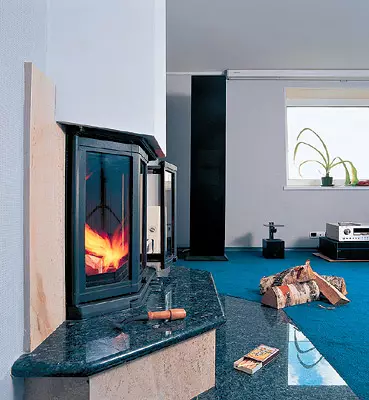
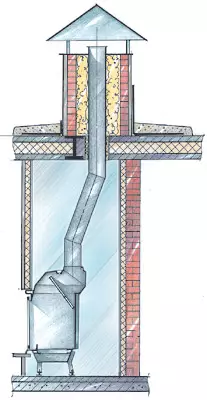
Possessing a fairly large margin of ideas, the owners could manage themselves as possible and turned to specialists only during the selection of fireboxes. Stopped on a closed cast iron model DOVRE 2900GL (Norway) with a capacity of 16kW and weighing 180 kg. The house overlap can withstand such a load without additional fortifications. The glass of the furnace has an aircraft form, this is a kind of compromise between banal "flat" structures and expensive semi-circular.
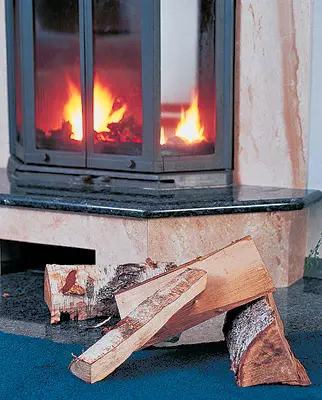
Calculation of the cost of the fireplace with installation
| Accessories and work | Cost, $ |
|---|---|
| DOVRE 2900 GL (Norway) | 1430. |
| Pipes for chimney type "Sandwich", made of stainless steel | 180. |
| Insulation (foil cash) | 130. |
| Case made of plasterboard | twenty |
| Facing marble | 230. |
| Prepare Plant (granite) | 240. |
| Ventilation grilles (3 pcs.) | 70. |
| Materials for the construction of a chimney head (brick, cement, etc.) | 80. |
| Installation of the fireplace | 600. |
| TOTAL | 2980. |
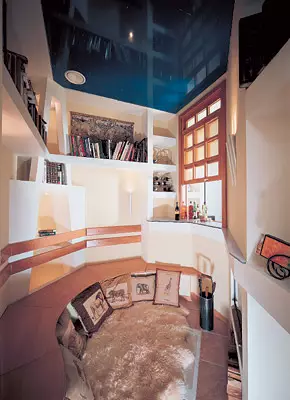
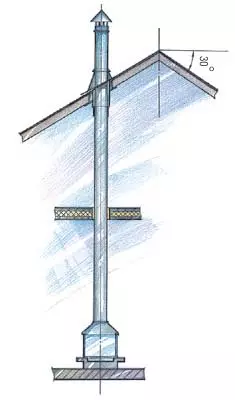
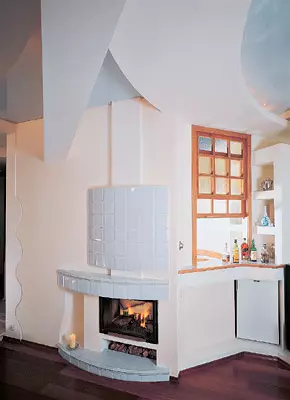
Chimney with a total height of approximately 7m (the attic rooms are located above the apartment) has a strictly vertical design. The lizage is installed central air conditioning, and the mantelter is constantly replenished with fresh air, so the fireplace has no problems with the fireplace for all the operation time.
Calculation of the cost of the fireplace with installation
| Accessories and work | Cost, $ |
|---|---|
| Mars 75 ST furnace (STEKO, Czech Republic) | 3500. |
| Pipes for chimney type "sandwich", made of stainless steel ("Inteco", Russia) | 1200. |
| Glazed Ceramic Tile (Living Room Facing) | 300. |
| Fallestin of plasterboard (chimney disguise) | 600. |
| Installation of the fireplace | 600. |
| TOTAL | 6200. |
The editorial board thanks the company "Art-Ton", "Duck Hall", "Saga-Bis", "Evita-fireplaces", the architect Igor Bobenko for help in the preparation of material, as well as Vladimir and Innu Pozdnyakov for help in carrying out photography.
